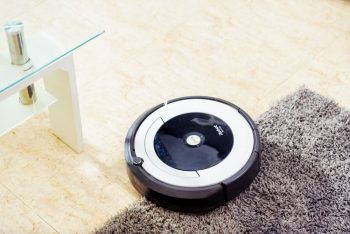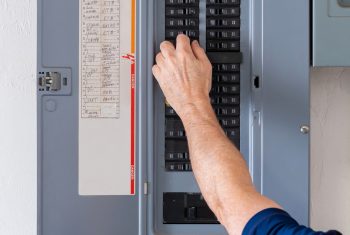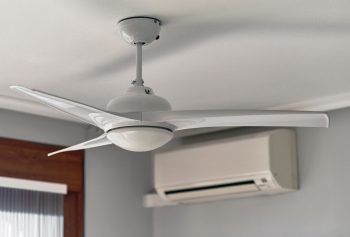
If you own a Maytag washer, there may come a time when you need to replace the suspension rods. These rods play a crucial role in stabilizing the tub of your washing machine, ensuring a smooth and quiet operation. In this comprehensive guide, we’ll walk you through the process step-by-step, providing useful tips and precautions along the way.
To replace suspension rods on a Maytag washer, first disconnect the washer from the power and water supply. Then, remove the old suspension rods by unscrewing the main top, lifting it, removing the tub cover if necessary, lifting up a suspension rod, unhooking the retaining ball, detaching the bushing from the outer tub bracket and removing the rod. Install the new rods by hooking them into the top of the washer and attaching them to the tub. Finally, reconnect the fill hoses, turn on the water supplies, plug the washer back in and run a test load to ensure proper functioning.
Signs That Your Suspension Rods Need Replacing
Before we dive into the replacement process, let’s first discuss the signs that your suspension rods might need replacing. These include:
- Excessive shaking or vibration: If your washing machine shakes or vibrates more than usual during the spin cycle, it could indicate worn-out suspension rods.
- Bouncing drum: Pushing down on the drum and noticing excessive bouncing can be a sign of faulty suspension rods.
- Noise: Unusual noises, such as banging or rattling during the spin cycle, could be due to damaged suspension rods.
- Off-balance drum: If the washer’s drum seems off-balance, it could be a sign of a broken suspension rod.
- Damaged sides of the washer: If the sides of the washer are chewed up or damaged, it could be due to the tub bouncing around excessively because of faulty suspension rods.
Required Tools
To replace the suspension rods in your Maytag washer, you’ll need the following tools:
- Putty knife
- 5/16-inch nut driver
- Pliers
- Holding strap
Disconnecting the Washer
Before starting any repair, always ensure the appliance is unplugged and the water supply is turned off to avoid any risk of electrocution or water leakage. Here’s how to do it:
- Turn off the water valves located behind the washing machine.
- Unplug the washing machine from the power source.
- Using pliers or an adjustable wrench, loosen the nuts connecting the water hoses to the back of the washer, then remove the hoses.
- Place a water pan or bucket behind the washing machine, under the water lines where it will catch water. Surround the bucket with several towels to catch any additional leaks or water that may spill out when the pipes are detached.
- Locate and disconnect the drain hose from the washer and the drain system. Be prepared for potential spills as there might be some residual water in the hose.
Removing the Old Suspension Rods
Once you’ve safely disconnected your washer, you can proceed with removing the old suspension rods:
- Pull the washer away from the wall to access the back.
- Remove the screws securing the main top at the back of the washer.
- Lift the main top and secure it with a chain or other support.
- Remove the tub cover if necessary for easier access to the suspension rods.
- Reach in and lift up a suspension rod, then unhook the retaining ball from the rod.
- Detach the bushing from the outer tub bracket using a flathead screwdriver.
- Fully remove the old suspension rod.
Installing the New Suspension Rods
Now that you’ve removed the old suspension rods, it’s time to install the new ones:
- Hook the new suspension rods into the top of the washer and attach them to the tub. Make sure they are securely in place.
- Reconnect the fill hoses to the back of the washer, making sure they are tightened properly.
- Turn on the hot and cold water supplies and plug the washer back in.
Testing the Washer
After installing the new suspension rods, it’s important to test the washer to ensure it’s functioning correctly:
- Check the washer for proper leveling and adjust the feet if necessary.
- Run a small test load of laundry to ensure the washer is functioning correctly and not shaking or banging during the spin cycle.
If the washer is still shaking or banging after replacing the suspension rods, it could be due to other issues, such as a problem with the transmission or an imbalanced drum. In this case, consult a professional technician for further assistance.
Final Words
Replacing the suspension rods in a Maytag washer may seem like a daunting task, but with the right tools and a little patience, it’s a job that you can tackle on your own. We hope this guide has provided you with the knowledge and confidence needed to perform this repair. Remember, if at any point you feel uncomfortable performing these steps, don’t hesitate to call a professional. Safety should always be your top priority.
Frequently Asked Questions
Where can I purchase replacement suspension rods for a Maytag washer?
Replacement suspension rods for a Maytag washer can be purchased from various online retailers such as Amazon, eBay, or directly from the Maytag’s parts website. You can also check with local appliance repair shops or home improvement stores.
How long does it typically take to replace the suspension rods on a Maytag washer?
The time it takes to replace the suspension rods can vary depending on your level of experience with appliance repairs. However, for most people, it should take about 1 to 2 hours.
How many suspension rods are there in a Maytag washer?
Most Maytag washers have four suspension rods – one in each corner of the machine.
Do I need to replace all the suspension rods at the same time?
While it’s possible that only one suspension rod is faulty, it’s generally recommended to replace all four at the same time. This is because if one has worn out, the others are likely not far behind.
Can I use suspension rods from a different brand in my Maytag washer?
It’s recommended to use suspension rods specifically designed for your Maytag washer model. Using parts from a different brand or model may not fit properly and could potentially cause damage. Always refer to your washer’s manual or consult with a professional if you’re unsure.












